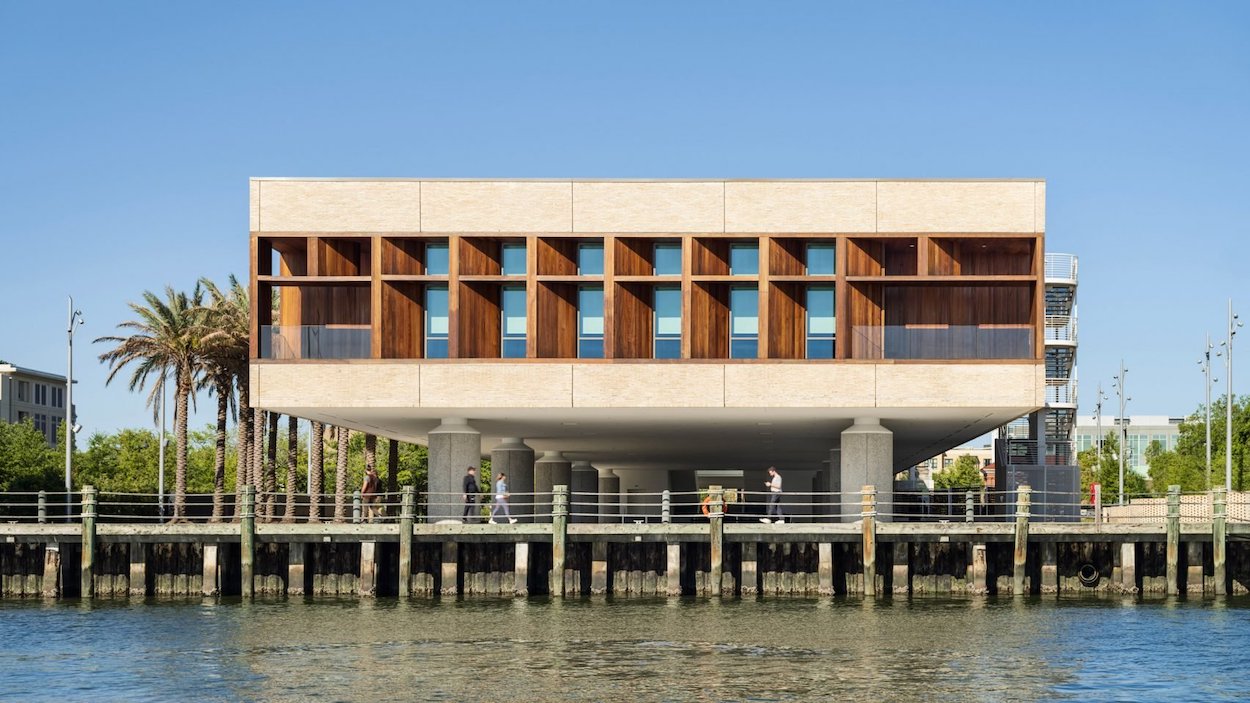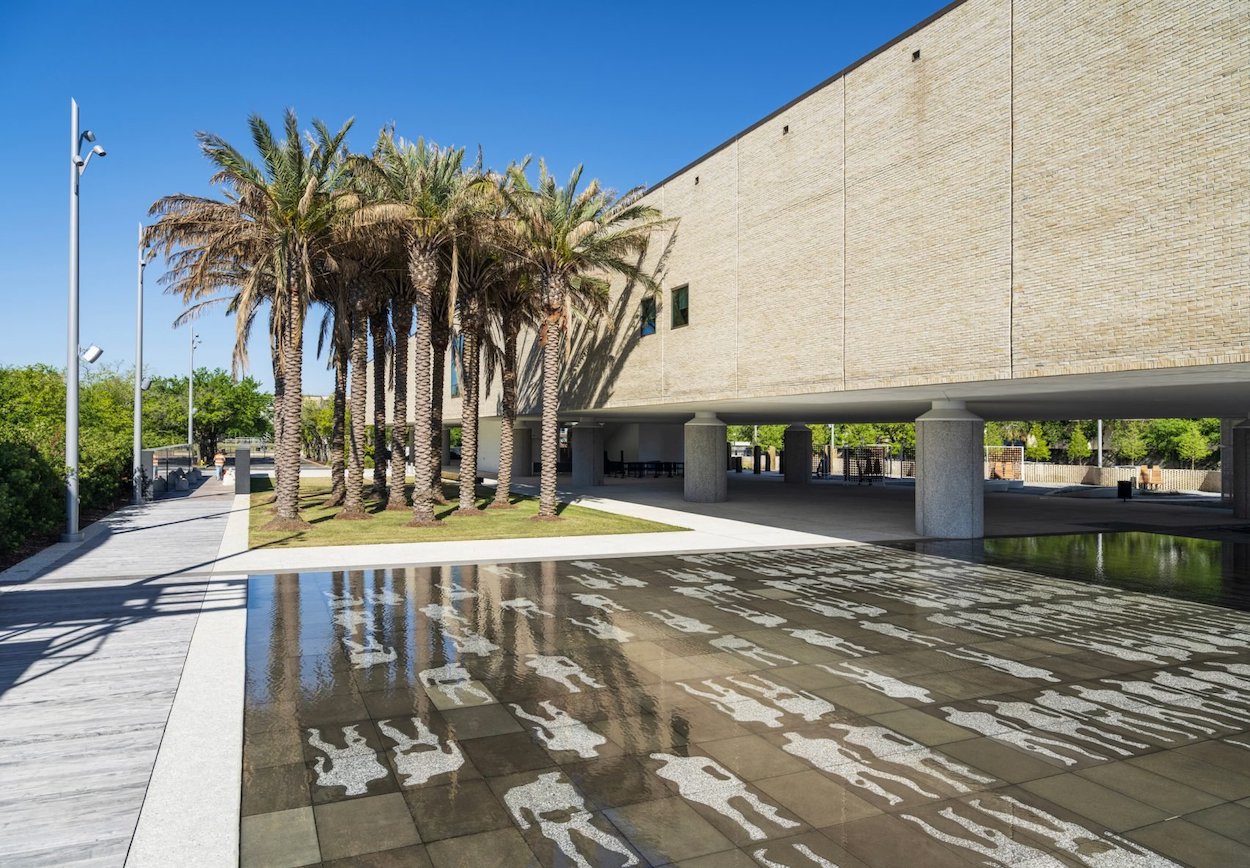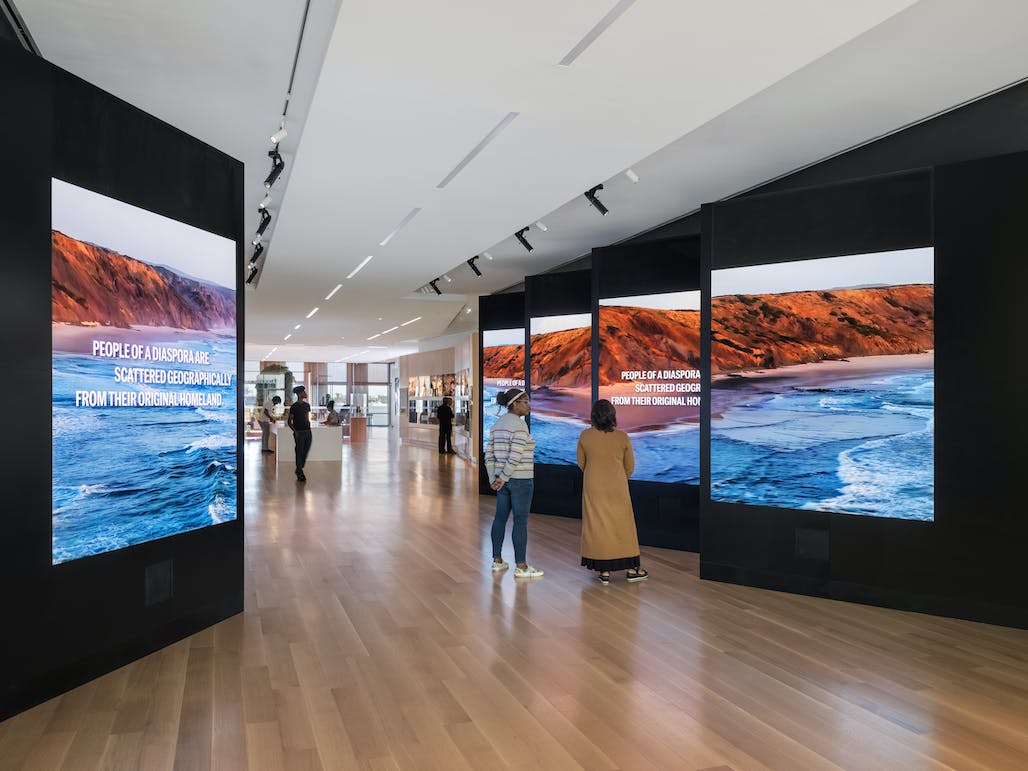In the 18th and 19th centuries, ships carrying tens of thousands of enslaved Africans landed at Gadsden’s Wharf in Charleston Harbor, not far from where the Civil War’s first shots were fired. The ships may have gone, but the site’s heavy history remains intact thanks to the long-awaited International African American Museum, whose quarter-century journey to life was beset by political squabbles, economic downturns, and administrative snafus. The museum, floating ship-like on the harbor in an elegant building designed by Moody Nolan and Pei Cobb Freed & Partners, is a powerful document of Black creative and cultural energy shakily entering the United States.
That fraught journey begins outside, in a tranquil park conceived as a tribute to victims of the torturous Middle Passage. Life-size silhouettes of ghostly bodies packed shoulder-to-shoulder loom like specters in the pavement; they contrast landscape architect Walter J. Hood’s lush gardens of African palm trees and sweet grass from South Carolina. Not unlike Menashe Kadishman’s poignant tribute to Holocaust victims at Berlin’s Jewish Museum or the Field of Empty Chairs to commemorate victims of the Oklahoma City Bombing, the fountain immediately sheds light on slavery’s human toll—and sets a tone of solemnity and reflection.



